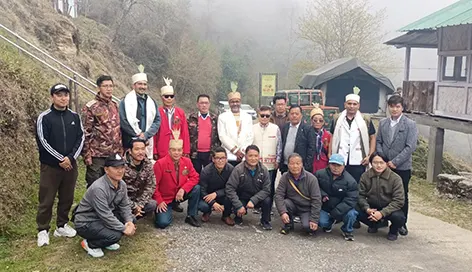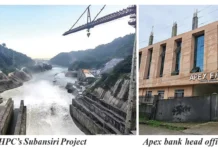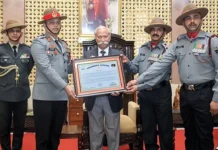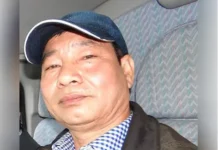[ Prem Chetry ]
SINGCHUNG, 31 Mar: Chief Secretary Manish Kumar Gupta gave assurance that the need for infrastructure development in the Singchung Bugun Village Community Reserve (SBVCR) and the Eaglenest Wildlife Sanctuary (EWS) would be addressed at the earliest to enhance ecotourism and wildlife conservation in the area.
He said this in response to a memorandum submitted by members of the SBVCR.
The CS, accompanied by Commissioner Swagat Biswas and Conservator of Forests Dr Damodhar ATconcluded a two-day visit to the SBVCR and the EWS in Singchung subdivision in West Kameng district on Monday.
Referring to the Bugun liocichla, the chief secretary said, “This bird species has put the place on the world map.” He lauded the efforts of the SBVCR in conserving this endemic bird species, saying that
“it is one successful community reserve in the state.”
He said that “infrastructure development is necessary for the conservation of the community reserve, which will facilitate eco-conservation and educate students and youths about biodiversity.”
Range Forest Officer Yachang Kani briefed the CS on the conservation efforts at the EWS and the SBVCR. He led the team to various sites, including the cherry blossom plantation, Glow Bari, and Lama Camp. On the second day, the team trekked to Tragopanda Lake and went on a safari drive to Bompu under the EWS.
SBVCR members, led by former minister and SBVCR founder Naresh Glow, highlighted that the reserve is a treasure trove of biodiversity, known for its endemic species, including the Bugun liocichla, the red panda, the Tibetan brimestone, and the rare Bhutan glory butterfly. The reserve attracts thousands of tourists annually, establishing itself as a model for community-driven ecotourism.
However, lack of adequate infrastructure poses a challenge to conservation and sustainable tourism. To address this, the SBVCR submitted project proposals, including the construction of a community culture centre, wildlife safari vehicles, and upgradation of the forest rest house.
These developments aim to enhance the efficacy of conservation efforts, elevate the ecotourism experience, and provide a comfortable environment for professional training and educational programmes.
To further enhance the reserve and provide better ecotourism experience, the SBVCR submitted project proposals for construction of a community culture centre in Ramalingam, with a capacity to accommodate 500 guests, to provide a dedicated space for conferences, workshops, and educational activities within the SBVCR.
The SBVCR and the adjacent EWS serve as vital training grounds for future forest professionals. Each year, trainee IFS officers, trainee assistant conservators of forests, trainee range forest officers, trainee foresters, and forest guards visit the SBVCR and the EWS. They engage in conferences and interactive sessions within the reserve, enhancing their understanding of forest and wildlife management.
Furthermore, the SBVCR hosts an annual eight-day residential nature and wildlife education programme, attracting approximately 250 students and teachers from surrounding areas. Currently, these programmes are conducted using temporary tent accommodations, which poses logistical challenges and limit the effectiveness of the educational experience.
The SBVCR said that infrastructural development would enhance training quality, and provide a comfortable and conducive environment for professional training. It would further improve educational programmes and facilitate the delivery of impactful nature and wildlife education to students and teachers.
It also sought construction of a new tourist lodge in Ramalingam to accommodate the increasing number of tourists visiting the SBVCR and the EWS.





